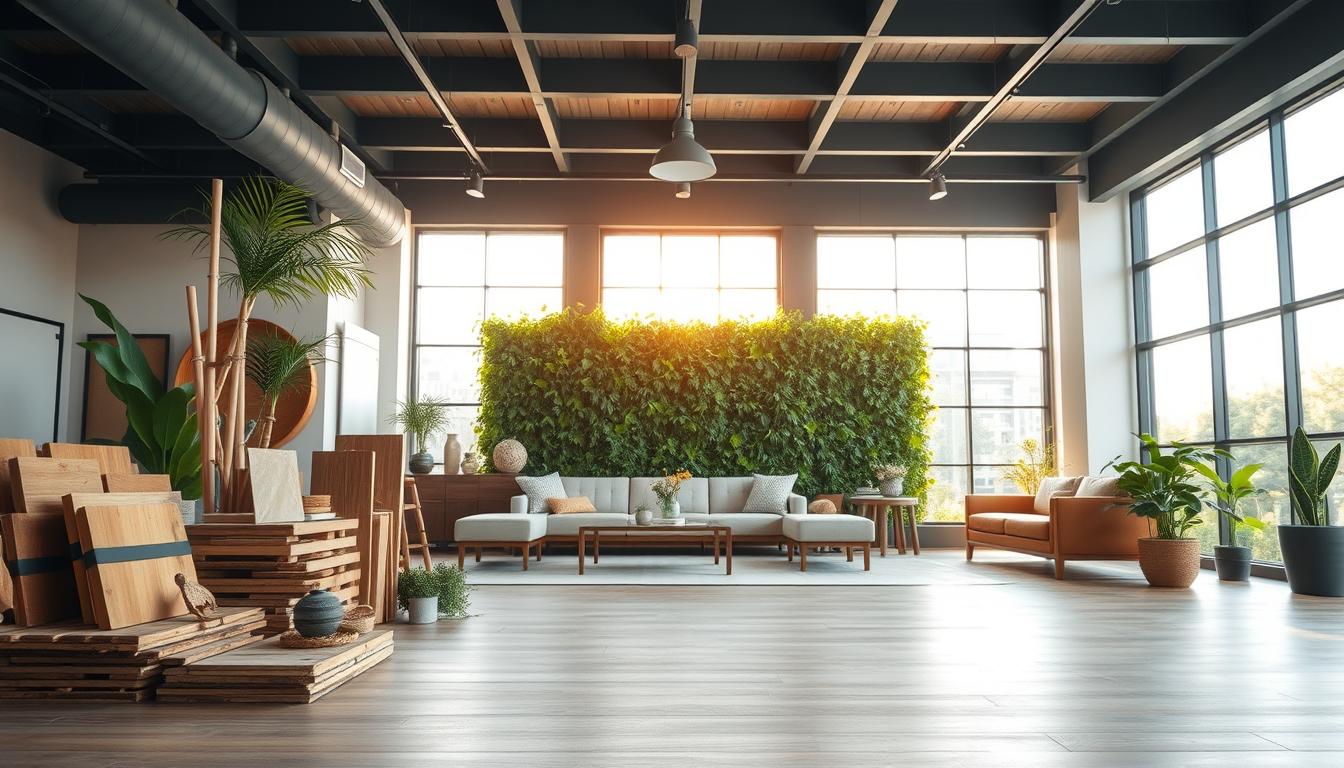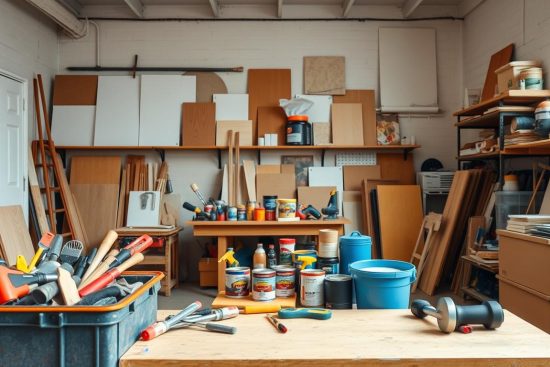
Our planet is facing major challenges, including climate change, which has led the building sector to concentrate increasingly on sustainable building materials. Utilizing these materials makes our houses and buildings healthier.
There is a significant transformation in the construction sector. People desire to live in greener spaces and governments are becoming stricter, thus environmental laws are being reinforced. This is the message that the World Green Building Council conveys.
The U.S. Green Building Council and EcoBuildingPulse are presenting the frontiers in materials. The utilization of sustainable building not only aids the planet but also improves our lifestyles.
Key Takeaways
- Sustainable building materials are becoming more and more sought-after due to the climate change conscious.
- Eco-friendly materials altogether help to create a healthier environment.
- Today’s movements are about imposing stricter controls and consumers driving demand for green construction.
- The World Green Building Council is in favor of the sustainability of the construction sector.
- Changes in construction materials decide upon the future of the building industry.
Introductory Guide to Sustainable Building Materials
Today, sustainable materials are used for a healthier environment and help people drastically. These materials are the outcome of what they’re made of, their impact on the earth when disposed of, and the effect they have on people who live in
the buildings where these materials are used and its residents. Eco-friendly construction is imperative, as less environmental damage is done.
Now, even households and offices can reap the rewards of driving environmental sustainability. Such buildings become energy-efficient and save costs in the long run with these materials. The positive side of this win-win approach is that the projects contribute to both local development and environmental protection.
Advantages of Sustainable Building Materials
Employing sustainable building materials entails a host of benefits. Their minimal environmental impact is the primary advantage. They help with waste management and greenhouse gas emissions by making use of materials that are either recyclable or renewable.
Moreover, the emission of indoor air pollutants is lower. The available data suggest that eco-friendly materials decrease other substances that are causing irritation and allergies. As a result, they contribute to the promotion of healthier buildings and workspace.
Green construction also provides an energy advantage. In these cases, energy-consuming comfort devices operate in more efficient ways, leading to less utility and maintenance expense in the future.
Therefore, the fabric of the environment and our health will benefit from choosing sustainable materials. Not only that, the initial cost will be diminished through savings in the living and working environment.
Sustainable Building Materials Categories
The use of sustainable building materials not only helps fight environmental damage but also backs eco-friendly construction. The division of these materials into two general types is: recycled materials and renewable resources, such as bamboo. These categories illustrate how they make buildings greener and therefore create the basis for industries operating in a sustainable manner.
Recycled Materials
Recycled materials are the key elements in the process of the reduction of waste and resource conservation in construction. Some examples are:
- Reclaimed Wood: This timber is from old buildings, giving a rustic appearance, and it saves trees from being cut down.
- Recycled Steel: This metalloid is strong, durable, and is the perfect solution to the problem of the new steel consumer demand.
- Recycled Glass: It converts old glass into new items, thus saving energy and reducing landfill waste.
The creating of such materials not only contributes to the reduction of waste but also introduces new construction ideas. This is a clear sign of dedication to making every single project sustainable.
Bamboo and Other Renewable Resources
Bamboo is increasingly becoming a preferred material for eco-friendly building due to its rapid growth and high strength. The versatility of bamboo in many different applications makes it a crucial player within the framework of the green building. Among the new materials that are trending are also cork and straw:
- Cork: Sourced from baby cork oak trees, it is perfect for keeping buildings warm.
- Straw Bales: They’re the most popular choice for exterior walls with warm properties, insulating, and available at no cost.
These materials are not only visually stunning but also contribute to the promotion of a sustainable building sector.
Innovations in Eco-Friendly Construction
Fresh concepts are modernizing the construction industry, making it more eco-friendly and efficient. We center on utilizing the newest materials and approaches. These contribute to the reduction of environmental degradation and energy consumption as well.
Advanced Insulation Techniques
New insulation techniques are fundamental to the green building process. Spray foam, cellulose, and reflective insulation are the types of materials that keep buildings warm or cool. They have the advantages of saving energy and proving to be the air inside buildings.
According to the North American Insulation Manufacturers Association (NAIMA), the right insulation can result in significant energy savings over a long time.
Smart Glass Technology
Smart glass technology represents a significant innovation in building design. It alters its features based on the weather letting in more natural light and thus conserving energy. The Glass Association of North America (GANA) states that the use of smart glass can substantially alter the amount of energy utilized.
This regulating of light and heat contributes to the comfort of buildings and makes them eco-friendly. It is applicable to a wide range of buildings.
| Insulation Type | Energy Savings (%) | Environmental Impact |
|---|---|---|
| Spray Foam | 30-50 | Low VOC emissions |
| Cellulose | 20-40 | Recycled paper content |
| Reflective Insulation | 10-30 | Energy-efficient manufacturing |
We are transforming the construction sector with the implementation of these revolutionary methods and technologies. We are indeed moving ahead towards a more energy-efficient and greener future.
Sustainable Wood Alternatives
The selection of sustainable wood alternatives is a clever step to protect the planet. Reclaimed timber gives any room a charming and unique character. It has incredible benefits such as being the ideal material for different construction projects and reducing the need for new timber.
In addition to preserving our forests, these products also convey the message of sustainable forestry. They prove the possibility of taking care of our living space.
The certified wood that comes from well-managed forests meets the highest environmental requirements. Organizations like the Forest Stewardship Council advocate for such procedures. They are responsible for the preservation of forests for the next generations.
Choosing certified wood facilitates the health of our ecosystems. This is a very direct impact on the well-being of our environment.
Manufactured products can be made from recycled materials that mimic the characteristics of wood. This means that by bringing waste back to life we also save natural resources.
Going for sustainable wood is a way for us to make beautiful places that are friendly to the environment. This is a collective step towards a healthier world.
Natural Insulation Materials for Green Construction
Natural insulation materials are becoming a staple in the construction of eco-friendly homes. They save energy and promote our environment’s health. Examples of such materials include hemp and cellulose, both of which have unique benefits to offer for green buildings.
Hemp Insulation
Hemp insulation is one of the highest performers and environment-friendly material to use. As it is renewable, it helps in reducing carbon foot print. Besides, it is pest and mold resistant; that is why it is so often used in Eco-friendly buildings.
Cellulose Insulation
Cellulose insulation is a very sustainable material as it is made using recycled paper. Waste products are used, thereby reducing the use of landfills. Cellulose insulation is a great option for new buildings since it helps with heating issues, brings down energy consumption and reduces carbon footprint. For a greener approach, one should use cellulose.
Green Roofs and Living Walls
In urban areas, green roofs and living walls are becoming popular in eco-friendly landscaping. They support biodiversity and improve air quality. Green roofs are the homes of birds and insects and they protect buildings from heating. On the other hand, living walls, having their vertical gardens, help to diminish heat and humidity.
Green roofs can also contribute to cutting energy bills. They keep buildings at an enjoyable temperature. Due to these roofs, towns are turning green again. Living walls make places beautiful, drawing attention to nature.
Below are the main advantages of the green roofs and living walls in cities:
| Feature | Green Roofs | Living Walls |
|---|---|---|
| Biodiversity | Supports various species | Creates microhabitats |
| Air Quality | Reduces pollutants | Filters toxins |
| Temperature Regulation | Insulates buildings | Reduces heat buildup |
| Visual Appeal | Enhances skyline | Decorative and functional |
Green roofs and living walls are a perfect way to deal with the concrete jungle environmental problems as they are the ones being expandable. They also push for a greener future for all humans.
Sustainable building Materials in Urban Development
Urban development is developing and the main focus is on the using of sustainable building materials. These materials are essential to protecting local ecosystems. They are the enemies of environmental problems and the supporters of biodiversity.
The right materials are the main determinants of nature and man live together in peace. Therefore, the cities can expand without infringing on the environment.
Impact on Local Ecosystems
The use of sustainable products is highly influential in the urban ecosystem. It creates space for naturals habitats and cuts pollution down. According to the Environmental Protection Agency, building construction is a main factor in environmental issues.
Constructors should carefully choose construction materials that are not harmful to the environments, this will help the cities stay in good condition for wildlife and plants.
Community Engagement in Green Projects
Community involvement is the key to green projects. By working together as a community, they are able to make a great impact. This brings a better environment and creates strong community ties.
The Project for Public Spaces displays the local efforts of creating better cities via collaboration. The projects themselves show that teamwork can result in benefits for everyone.


